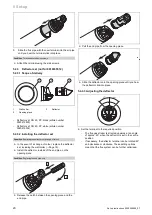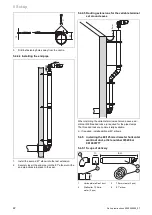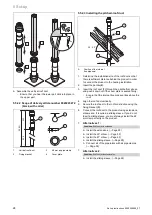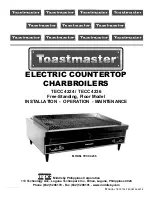
System conditions 4
0020200969_07 Set-up instructions
9
4
System conditions
4.1
Route of the air/flue pipe in buildings
The air/flue system should be as short as possible and run
as straight as possible.
▶
Do not arrange several elbows or inspection elements
immediately after each other.
As a result of standards relating to the hygiene of drinking
water, water pipes must be protected against impermissible
heating.
▶
Lay the air/flue pipe separately from the drinking water
pipes.
It must be possible to check and, if required, clean the entire
length of the flue gas route.
It must be possible to remove the air/flue pipe again with
minimal effort (no time-consuming structural or cementing
work in the living area, but screwed-in casing instead). If they
are arranged in shafts, they are usually easy to remove.
4.2
Location of the terminal
The location of the flue system terminal must comply with
the relevant applicable international, national and/or local
regulations.
▶
Align the terminal of the flue system in such a way that
ensures a secure outward flow and distribution of the
flue gases and prevents these gases from re-entering the
building through openings (windows, supply air openings
and balconies).
▶
Comply with the specified clearances.
4.3
Disposing of condensate
Local regulations may stipulate the minimum quality of any
condensate that may enter the public waste-water system. If
required, a condensate neutraliser must be used.
▶
When disposing of the condensate into the public waste-
water system, observe the local regulations.
▶
Only use corrosion-resistant piping material for removing
condensate discharge.
4.4
Maximum pipe lengths
4.4.1
Maximum pipe length for horizontal wall duct
A
A
Maximum pipe length
4.4.2
Maximum pipe length of the horizontal wall
duct with vertical terminal set (60/100 mm
diameter only)
A
B
A
Concentric pipe length
B
Outdoor pipe length
4.4.3
Maximum pipe length for vertical roof duct
A
A
Maximum pipe length










































